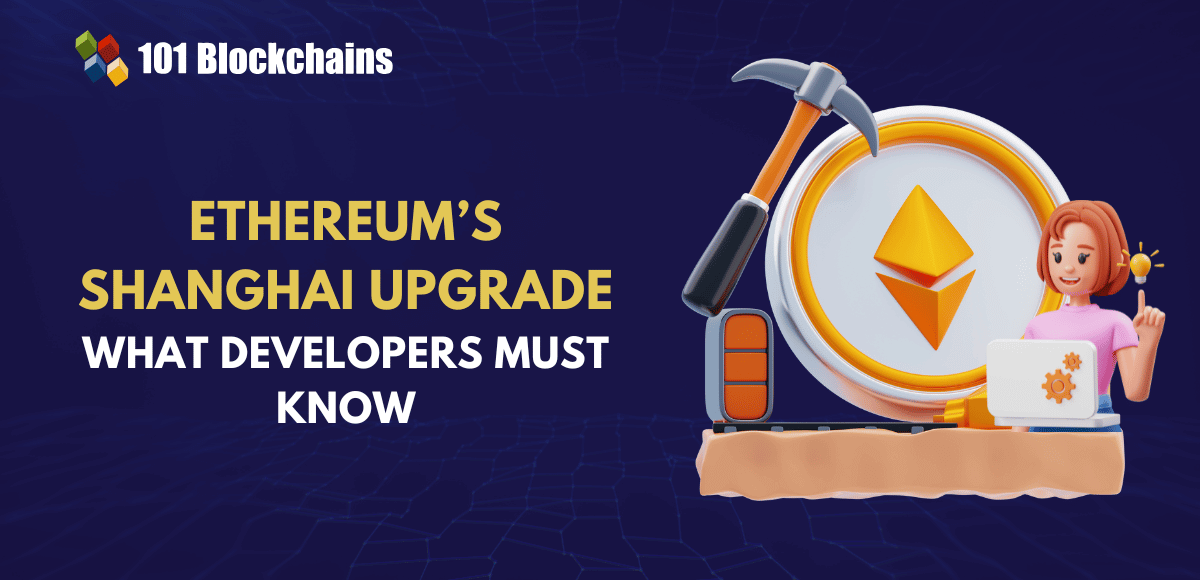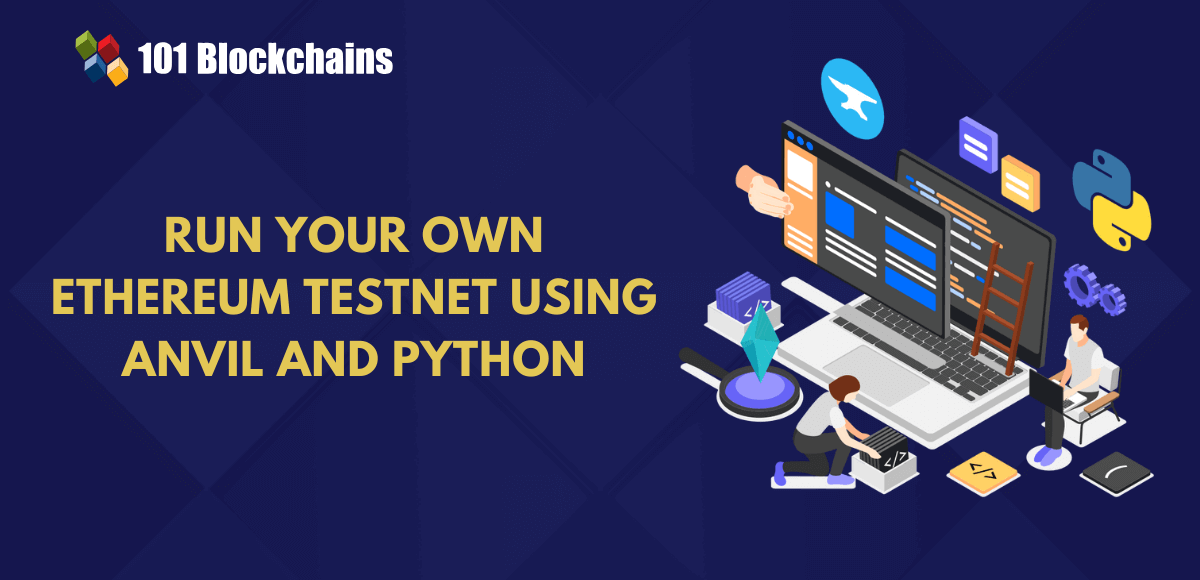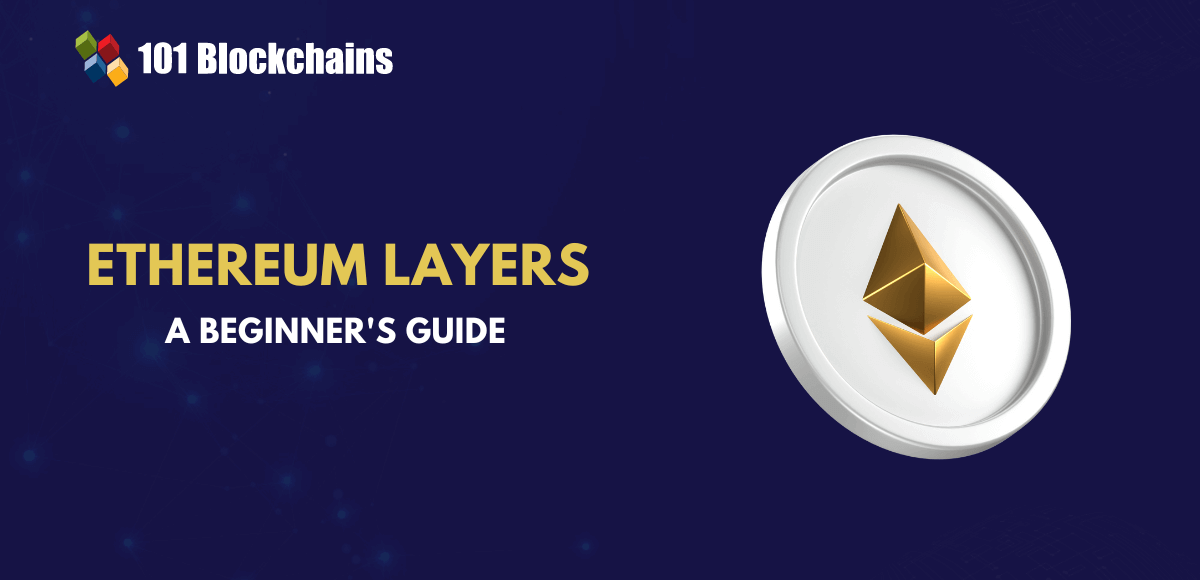Learn how blockchain truly works, master key definitions, and uncover what makes smart contracts so "smart." Dive into the fundamentals, gain valuable insights, and start your blockchain journey today!

- Ethereum
Georgia Weston
- on July 04, 2023
ERC-4337: A Complete Guide To Account Abstraction
The adoption of crypto and blockchain has witnessed a staggering rise, with growing recognition for DeFi, NFTs and dApps. On the other hand, garnering users’ interest and helping them use crypto and blockchain applications is a major challenge. The fundamentals of ERC-4337 explained for beginners would show you how it aims at solving this challenge.
Complex concepts such as smart contracts and comprehensive working modules, alongside the lack of interoperability between centralized and decentralized systems, have been the major barriers to crypto and blockchain adoption. Ethereum has planned to improve the accessibility of every aspect of the crypto world with the help of account abstraction through ERC-4337 and EIP-4337. The following post provides a detailed guide to ERC-4337 and how it helps achieve account abstraction.
Build your identity as a certified blockchain expert with 101 Blockchains’ Blockchain Certifications designed to provide enhanced career prospects.
What Are ERC-4337 and EIP-4337?
Ethereum plans to make crypto onboarding easier in 2023 with EIP-4337 and ERC-4337. Both are crucial boosters for encouraging web3 adoption by offering access to smart accounts. Interestingly, many people use EIP-4337 and ERC-4337 interchangeably, although they are completely different.
EIP stands for Ethereum Improvement Proposal, while ERC stands for Ethereum Request for Comment, and both are crucial for the growth of the Ethereum ecosystem. Ethereum Improvement Proposal is the initial proposal for a technical change in the Ethereum network. The EIP turns into an ERC upon approval through the on-chain governance model.
The journey of ERC-4337 had started as EIP-4337, establishing a clear distinction between them. It is also important to note that ERC focuses primarily on standards for protocol specifications and development methods.
ERC-4337 is a new Ethereum standard transforming user accounts with enhanced smart capabilities. You can find a technical perspective on the definition of ERC-4337 with a simple term, i.e. account abstraction. What is account abstraction? Why is it useful for Ethereum now? Abstraction refers to the introduction of new ideas or capabilities in user accounts with respect to ERC-4337. At the same time, account abstraction could also mean removal or extraction from user accounts, such as excluding legacy management of user accounts. It can involve reducing the emphasis on using seed phrases, dependence on private keys and individual transaction signing.
Curious about the Ethereum Technology ? Enroll now: The Complete Ethereum Technology Course
Simple Explanation for ERC-4337
The relationship between ERC-4337 and account abstraction provides brief insights into what Ethereum aims to achieve with the new upgrade. However, you might want an ERC 4337 tutorial to explain the concept in a simpler manner. The new Ethereum standard is an upgrade for the Ethereum ecosystem, which would introduce smart contract functionalities in wallets.
In other words, it tries to turn your wallets into smart accounts. What are “smart accounts”, and how would they help? Smart accounts could address multiple tasks ranging from management of multi-factor authentication to starting and maintaining crypto subscriptions through code.
The introduction of ERC-4337 would offer the possibilities for creating ERC-4337 wallets. The answers to ‘What is ERC wallet‘ would point to the different things you can abstract in a wallet. Abstraction of authentication, payment and double spend safeguards through a new Ethereum standard creates new functionalities for wallets. Let us assume a simple explanation for ERC-4337 to understand the term and its implications.
Take a traditional pocket wallet. It has one section for storing cash and other sections for keeping your credit cards, coupons and others. Imagine that you purchase a lemonade on a sunny day, and you need to pay in cash. You would open your wallet and access the section where you kept the cash rather than the ones with your credit card. Think of your wallet as a smart account or an abstraction that introduces one section that includes a payment mechanism.
The payment mechanism could be accepted in the form of cash, credit card or coupons. The response to “What is account abstraction?” with such an example shows how crypto wallets could become more personalized for users. Account abstraction in the blockchain is similar to such an example and leads to the creation of smart accounts.
Get familiar with common Ethereum terms with the Ethereum Flashcards
Background and Origins of ERC-4337
The next big thing you need to learn about ERC-4337 and its uses would point at its background and origins. You can find a detailed understanding of the goals of ERC-4337 explained for beginners by reflecting on its background. Where did the concept of account abstraction start? The first attempt at account abstraction was EIP-86, which focused on enabling smart contracts for initiating and approving transactions.
The next step in the move towards account abstraction was EIP-2938, which came forward in 2020. It focused on developing a new variant of top-level accounts with the help of address-specific smart contracts. 2020 also witnessed another EIP for account abstraction with EIP-3074, which aimed at creating self-executing smart contracts. In addition, EIP-196 also emphasized improving the efficiency and security of smart contracts.
Did you notice one thing about the different attempts at account abstraction? They never turned into an Ethereum Request for Comment and remained as EIPs or proposals. All the upgrade proposals for account abstraction never passed through because they demanded changes to the Ethereum consensus layer. EIP-4337 successfully turned into ERC-4337 by providing account abstraction without any modifications for consensus layer protocols.
It provided a way to introduce a higher infrastructure layer over the existing backend. On top of it, ERC-4337 is applicable for account abstraction across different EVM-compatible ecosystems.
Familiarize yourself with the second-most-popular blockchain network and Ethereum by Joining Ethereum Skill Path.
Reasons for Focusing on ERC-4337
Another highlight in discussions about ERC-4337 would also refer to how it transforms the crypto and blockchain landscape. You can wonder about answers to ‘what is ERC wallet‘ and how it can help you. ERC-4337 would practically take the term ‘wallet’ away from crypto glossaries.
People who have used conventional banking services will likely experience difficulties familiarizing themselves with crypto. At this point, ERC-4337 helps make users experience with crypto wallets similar to a bank. The user experience improvements with ERC-4337, such as limited dependence on seed phrases, are the foremost reasons why ERC-4337 is popular in web3 right now.
ERC-4337 provides an easier and standardized process for onboarding users through mobile devices. In addition, an ERC 4337 tutorial would also focus on the use of smart contract functionalities for wallets to reduce the possibilities of human error. On top of it, ERC-4337 also offers the flexibility for implementing changes on EVM-compatible chains alongside accessing banking features. The new Ethereum standard also emphasizes improving the security of the Ethereum network through compatibility with future signature schemes.
Learn about the real-world examples of smart contracts, Checkout Examples Of Smart Contracts Presentation
How Are Smart Accounts Better Than Smart Contracts for Account Abstraction?
Smart contracts follow a user-specific design and provide governance for features and functionalities in dApps, DAOs, DeFi applications and NFT marketplaces. Generally, users interacted with smart contracts deployed on blockchain networks by using their Metamask wallet, an Externally Owned Account. However, the problem with such approaches points to the necessity of individual transaction signing.
Beginners who need an overview of ERC-4337 explained in simple terms must experience confusion in transaction signing every time they use the wallet. Therefore, new users are likely to experience problems establishing and utilizing an Externally Owned Account like Metamask compared to traditional banking.
ERC-4337 can effectively solve such problems by introducing smart accounts, which transform your crypto wallets into smart contracts. However, you can explore additional responses for “what is ERC wallet” with respect to the applications of ERC-4337 for integrating more than the power of smart contracts.
The account abstraction could help you use mobile hardware similar to a hardware wallet, with a new perspective on cryptographic key storage. Another notable feature of smart accounts with ERC-4337 includes multiple account recovery options, such as a standard Google account. In addition, the new standard also improves the accessibility of the UX by removing developer-specific elements.
You should also note that account abstraction with ERC-4337 enables decentralization of the relay system, thereby enabling better security and censorship resistance. The best part about ERC-4337 is that it combines all the highlights proposed in the previous EIPs for account abstraction.
Excited to develop fluent knowledge of the DAO ecosystem? Enroll Now in DAO Fundamentals Course!
Technological Explanation of ERC-4337
The technology behind ERC-4337 is an obvious topic of interest for Ethereum developers. You can understand the answers to ‘What is account abstraction?’ with the ERC-4337 standard by diving deeper into their work. The working of ERC-4337 would include four different stages, with distinct functionalities in each stage. Here is a description of the four stages in ERC-4337.
The first stage of ERC-4337 involves sending out the user intent for a job in the form of UserOperation. It works as an entity related to users or applications that could use account abstraction. You can compare the UserOperation aspect of the process to unconfirmed transactions.
The second stage focuses on creating a bundle of the different bits of UserOperation in an alternate mempool. An alternate mempool is similar to a waiting room for unconfirmed transactions. Bundlers are responsible for validating the choice of who could obtain incentives and work on moving transactions forward. The Ethereum Request for Comment to create smart contracts also allows the co-existence of the UserOperations mempool with the standard mempool.
In the next step, the bundled transactions are transferred to the EntryPoint contract, which serves as a reference code for the blockchain. After this process, the contract would interact with the smart contract wallet of the user in the next step. The Entry Point contract invokes a validateUserOp function for recognizing and identifying the user operation with the contract wallet. On top of it, the smart contract account should also implement the ExecuteUserOp function to ensure the conclusion of the transaction.
Aspire to become a blockchain expert? Enroll Now: Certified Enterprise Blockchain Professional (CEBP)
How Will ERC-4337 Help Users?
The most noticeable aspect in a discussion about ERC-4337 would point to the ways in which it can benefit users. One of the first highlights in an ERC 4437 tutorial points to the role of the new standard in encouraging crypto and web3 adoption. Here are some of the most notable benefits of ERC-4337 for users.
Rather than signing off each transaction individually with Externally Owned Accounts, ERC-4437 can offer bundled transactions. As a result, you can send multiple transactions together and save time and gas fees.
ERC-4437 can also use account abstraction for offering a new functionality known as ‘Group-Access’ wallets. It would ensure that you can use previously designated accounts or contracts for retrieving access in the event of losing the seed phrase. In addition, ERC-4337 can also provide key abstraction, which would remove the need to depend on private keys.
The benefits outlined in answers to ‘What is ERC wallet‘ would also point to the facility of multi-factor authentication. You can enjoy the seamless functionality of smart accounts with mobile devices. Therefore, users can set their desired methods for authentication-specific transactions. ERC-4337 also provides the flexibility for obtaining the benefits of preapproved customized coding.
The benefits of ERC-4337 for users also include easier and automated access to DeFi and crypto trading. Users can instruct smart contracts to push idle funds to specific liquidity pools to achieve yields. On top of it, any individual planning on NFT or token trading can custom programming of their smart contract wallet. The custom coding can help in checking specific exchanges and marketplaces for low-cost cryptocurrencies and NFTs.
Want to get an in-depth understanding of crypto fundamentals, trading and investing strategies? Enroll Now in Crypto Fundamentals, Trading And Investing Course.
Final Words
The introduction to ERC-4337 explained the necessity of simplifying crypto transactions for users. Beginners can experience problems with creating and setting up an account, followed by interacting with smart contracts on blockchain networks for transactions. The advantages of ERC-4337 encourage a new generation of crypto wallets, rebranded as smart accounts.
In the long run, the Ethereum Request for Comment would provide an easy option for users to conduct crypto transactions. In addition, ERC-4337 also delivers potential value advantages for users with multi-factor authentication, custom coding and bundling of transactions. On top of it, the new Ethereum standard can enable best practices for account recovery along with easy ways for wallet setup. Learn more about ERC-4337 and its future now.
*Disclaimer: The article should not be taken as, and is not intended to provide any investment advice. Claims made in this article do not constitute investment advice and should not be taken as such. 101 Blockchains shall not be responsible for any loss sustained by any person who relies on this article. Do your own research!.





